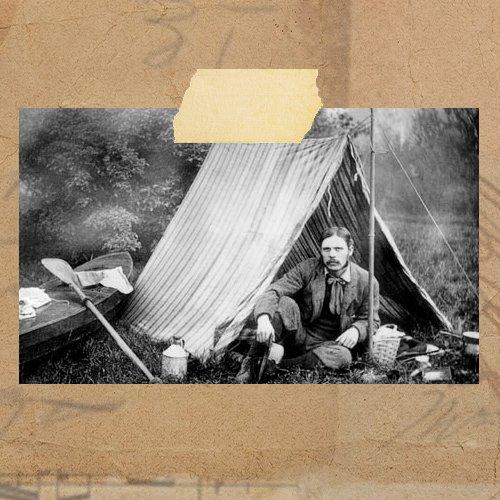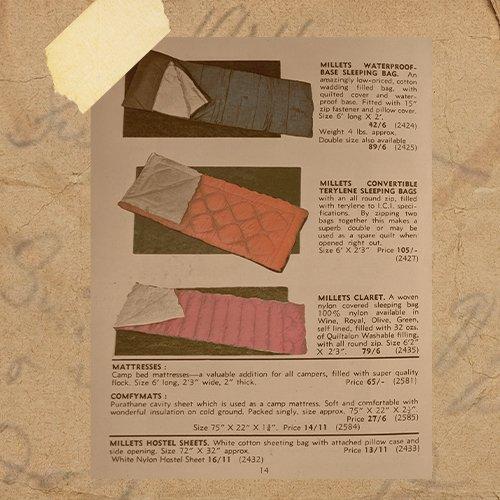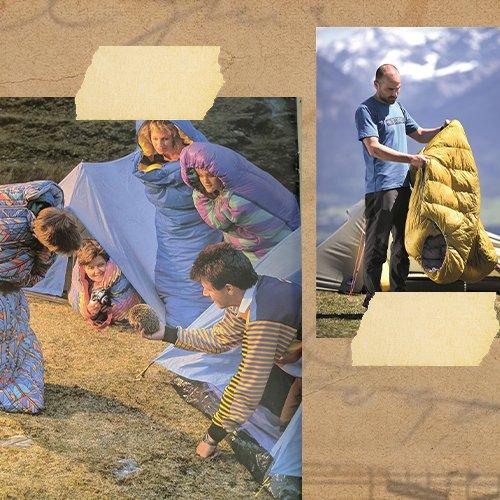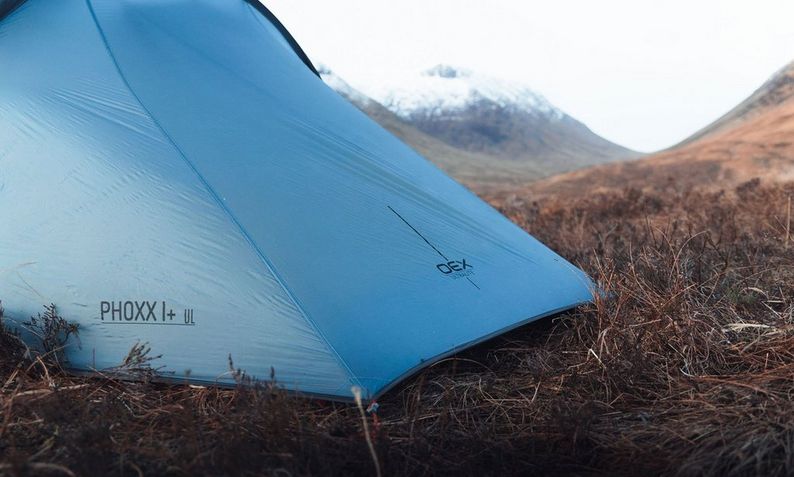Humans. We’re a species of inquisitiveness and exploration. We have discovered new isles, new planets, new animals and yet, our curiosity never falters. We’re in an age where commercial space flight is in our generation’s grasp. Even when you take away the galactic endeavours, the conquering of countries, and deep dives into the abyss, on an individual scale each person has their own sense of adventure.
When we’re not accomplishing momentous feats in the interest of human advancement, we take it upon ourselves to explore the outdoors recreationally. Take camping for instance. It became popular in the late 1800s thanks to Thomas Hiram Holding, known as the father of modern UK camping, but prior to that it was a necessity for travellers and explorers.
To satisfy our appetite for the great outdoors, inventors, trailblazers and pioneers have created both kit and equipment to consistently improve comfort and functionality. This inherent need to experience more, travel further and climb higher has driven the advances in outdoor kit we see today, and it shows no sign of decelerating. Nevertheless, let’s pause for a second, and take time to contemplate how far we’ve come over the last few centuries; let’s look at the evolution of camping equipment.
The Tent - A Necessity Turned Amenity
The history of when the first tents were used is somewhat unclear. There’s evidence that tents were used as early as 40,000 BC. These prehistoric dwellings were a necessity rather than a luxury, and as such, constructed with animal tusks and hides[1]. Although we’d consider them as unsightly today, they were immensely practical. Animal hides, much like human skin, are waterproof and robust, making them ideal for taking shelter. The first tents would be as wide as 24m2, and large enough to house a fire, although we wouldn’t recommend it nowadays.
The next significant leap in tent construction occurred in approximately 600-450 BC. Yurts and tepees were frequently used by the nomadic people, with the ability to be taken down and reconstructed elsewhere as they travelled. The materials used to construct yurts varied from traditional hides (something seen thousands of years prior), to felt, or both. Felt is created from sheep’s wool and provides highly insulating qualities, the portable concept of a yurt meant that felt could also be removed on warmer days to increase airflow[2]. The yurt structure would be supported by bamboo or wooden poles around the edge and roof for stability and sturdiness, so although portable they were robust too.
 Top right: A patent of the Sibley tent
Top right: A patent of the Sibley tentBottom left: A traditionally constructed yurt
 Thomas Hiram Holding
Thomas Hiram Holding
As centuries passed, developments in tent design were slow until the bell tent. Sources have quoted the bell tent as originating in the 7th and 9th Centuries, although its popularity rose exponentially in the mid-1800s[3]. The most notable development came in 1856 when US army officer, Henry Hopkins Sibley, reinvented the design to use one central mast pole instead of 12 individual poles. The new design meant the bell tent was now more taut, lightweight and durable which, for the military, was ideal[4]. Once at comfort behind the battlefield, bell tents are now widely used for glamping, a far cry from their roots.
Just over a century ago in 1898, Thomas Hiram Holding, produced the book, Cycling and Camping in Connemara. The publication of this book put recreational camping on the map for many. Three years later, the Camping and Caravanning Club was formed, highlighting the enthusiasm of camping for pleasure[3]. Although early contemporary camping still relied on the classic bell tent or canvas structure, it identified a need for technological advances in fabric and construction techniques.
Waterproof canvas tents were still the norm until the 1960s, where synthetic tents began to emerge. Archaic wooden poles and beams were replaced with robust aluminium poles, built to flex with the elements, not against them. Materials became lighter and more waterproof. The integration of internal bedrooms appeared, leaving the flysheet to independently keep bad weather at bay.
Even today, the tent as we know it is still adapting to meet our leisure needs. 1981 saw the introduction of inflatable tents, quick and simple to erect, they’re a stark contrast to the three-hour pitch time of a yurt. As we continue to progress, tents manufactured from recycled materials are beginning to appear on the market, merging both enjoyment of the outdoors and protecting it.
 Top left: A modern day backpacking tent
Top left: A modern day backpacking tent
Bottom right: A 1970s cabin tent
The Sleeping Bag - Caveman Inspired Comfort
 Top right: An early sleeping bag patent from 1898
Top right: An early sleeping bag patent from 1898
Bottom left: A three person buffalo sleeping bag, used for 1880s Arctic exploration
Sleeping outdoors can be sometimes problematic, there are many stressors affecting how the modern man and woman sleep. Temperature, comfort and lighting are all potential pain points when it comes to getting some shut-eye. Sources suggest as early as 200,000 years ago our ancestors created beds from sedges (a grass-like plant) and ash. The ash would be the bottom layer, a clear base to add grass to, and a preventative measure against insects[5]. Approximately 30cm of grass would then be layered upon the ash for additional comfort and warmth.
Many millennia passed and sleeping equipment remained largely unchanged, the basics of staying warm, to some extent comfortable and insect-free continued to be the priority. Throughout the ages, locally sourced materials such as hay, straw, grass and wool were used to achieve the above-mentioned priorities.
Sleeping bags as we know them today arose in the 1850s. Patrolling French Customs Officials used a sheepskin lined cover with insulating wool to sleep in the blisteringly cold temperatures of the Pyrenees. Buckles were added in order to keep it together[6], and so the sleeping bag was born.
Only two decades later in 1876, the first commercial sleeping bag came into existence. The ‘Euklisia Rug’, patented and invented by Pryce Pryce-Jones, a Welsh entrepreneur. The Rug was exported globally, to the breadths of Russia, Britain, Africa and Australia, selling over 60,000 units into the late 19th Century[7]. Unlike previous centuries, the Euklisia Rug utilised a folded design, allowing users to fasten the bag around them, rather than awkwardly climb into them. The Rug was made from wool, and more of a blanket by today’s standards, but the design included a sewn in pocket and space for an inflatable rubber pillow[6].
The need for heat retaining properties soon escalated as pioneering and mountaineering became more widespread. It is commonly reported that a Norwegian business, Ajungilak were the first makers of the more recognisable insulated sleeping bag. Prior to the use of down and synthetic fill, sleeping bags, such as the ones produced by Ajungilak, were filled with plant material like kapok[8]. Kapok uses the seed hairs of the kapok tree to produce a cotton-like material, and in consequence, a great insulator.
 A selection of sleeping bags from an outdoors magazine in 1968
A selection of sleeping bags from an outdoors magazine in 1968
 Top right: A modern sleeping bag from Robens
Top right: A modern sleeping bag from Robens
Bottom left: Sleeping bags in the 1980s
Down and feather sleeping bags began circulating in around 1892[8], and by 1917 more technical advancements were made, with Eskimos creating sleeping bags from animal fur insulation and waterproof seal skin outers[9]. Much like tents, the 1960s is where the modern era of sleeping bags really took off. The Swinging Sixties in camping circles could identify as the Synthetic Sixties. It was the first time that synthetic fill was used in sleeping bags. Cheaper, lighter and offering better performance than down when wet saw sleeping bags become more affordable – facilitating the rise in recreational camping.
Nowadays sleeping bags are come in a range of shapes, sizes and constructions. The initial point of differentiation is mummy and rectangular shaped sleeping bags. Sleeping bags are now produced in a variety of sizes, either regular, women’s or children’s – created so those with smaller frames and children could be better insulated as they wouldn’t have to insulate a larger area.
Although over a century old since their first recorded use, down sleeping bags are still used today. Priding themselves on their warmth to weight ratio, down bags are highly premium and generally used by frequent campers endeavouring on advanced expeditions. The take-home message on sleeping bags is choice. Whether campers choose synthetic or down, mummy or rectangular, the developments over hundreds of years give outdoorspeople accessibility over anything else, which in my eye, is key.
If the most recent centuries have taught us anything, it’s that there’s no better feeling than the freedom of packing up your tent and venturing into the unknown. There lies the beauty of camping. If you’re feeling your inner wanderlust take hold, why not shop camping below?
1. Campingsitesinbritain.co.uk. 2020. A History of Tents | Camping Sites in Britain. [online] Available at: https://campingsitesinbritain.co.uk/general/a-history-of-tents/ [Accessed 20 July 2021].
2. Igoe, B., 2014. A Brief History Of Camping & Glamping | Lotus Belle Tents UK. [online] Lotus Belle Tents UK. Available at: https://lotusbelle.co.uk/blog/a-brief-history-of-camping-and-glamping/ [Accessed 20 July 2021].
3. Bell Tent UK. 2021. The Origin of Bell Tents | History of Cotton Canvas Shelters. [online] Available at: https://belltent.co.uk/pages/the-origin-of-bell-tents [Accessed 20 July 2021].
4. Portobello. 2021. HISTORY OF THE BELL TENT - Portobello. [online] Available at: https://www.portobellotents.com/news/history-bell-tent/ [Accessed 20 July 2021].
5. Gammon, K., 2020. 200,000 Years Ago, Humans Created Beds of Grass and Ash to Sleep. [online] Inside Science. Available at: https://www.insidescience.org/news/200000-years-ago-humans-created-beds-grass-and-ash-sleep [Accessed 20 July 2021].
6. Balogh, H., 2014. The Evolution of the Sleeping Bag. [online] Sierra. Available at: https://www.sierra.com/blog/camping/evolution-sleeping-bag/ [Accessed 20 July 2021].
7. Wigutow, J., 2017. the history of sleeping bag manufacturing. [online] Wiggy's. Available at: https://www.wiggys.com/wiggys-blog/the-history-of-sleeping-bag-manufacturing/ [Accessed 20 July 2021].
8. Millar, R., 2011. A short history of sleeping bags. [online] Wilderness Magazine. Available at: https://www.wildernessmag.co.nz/short-history-sleeping-bags/#:~:text=From%20animal%20skins%20to%20blankets,of%20years%20in%20the%20making&text=In%201876%2C%20the%20Welshman%20Pryce,an%20in%2Dsewn%20airtight%20pillow [Accessed 20 July 2021].
9. Clark, P., 2021. The Early Origins of Sleeping Bags. [online] Lucky Sheep. Available at: https://www.woolsleepingbag.com/the-early-origins-of-sleeping-bags/ [Accessed 20 July 2021].

